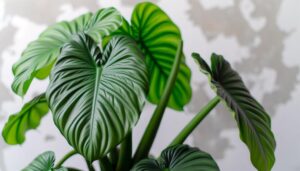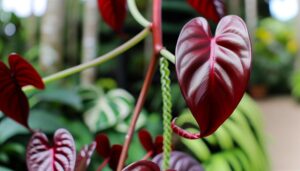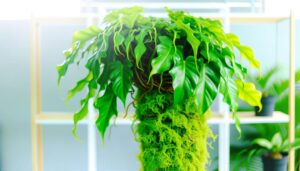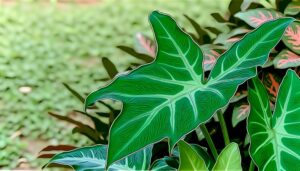What Is Philodendron Hope (Split Leaf)?
Philodendron Hope, scientifically termed Philodendron bipinnatifidum, is a plant native to the tropical regions of South America. Characterized by its large, glossy, deeply lobed leaves, it belongs to the Araceae family.
This species exhibits a climbing habit supported by robust stems and aerial roots. It thrives in indirect light, moderate humidity, and temperatures ranging from 18-27°C (65-80°F), favoring well-draining soils composed of peat, perlite, and pine bark.
Known for its air-purifying properties, it requires minimal maintenance. For those interested in its detailed cultivation requirements and benefits, further exploration will provide valuable insights.
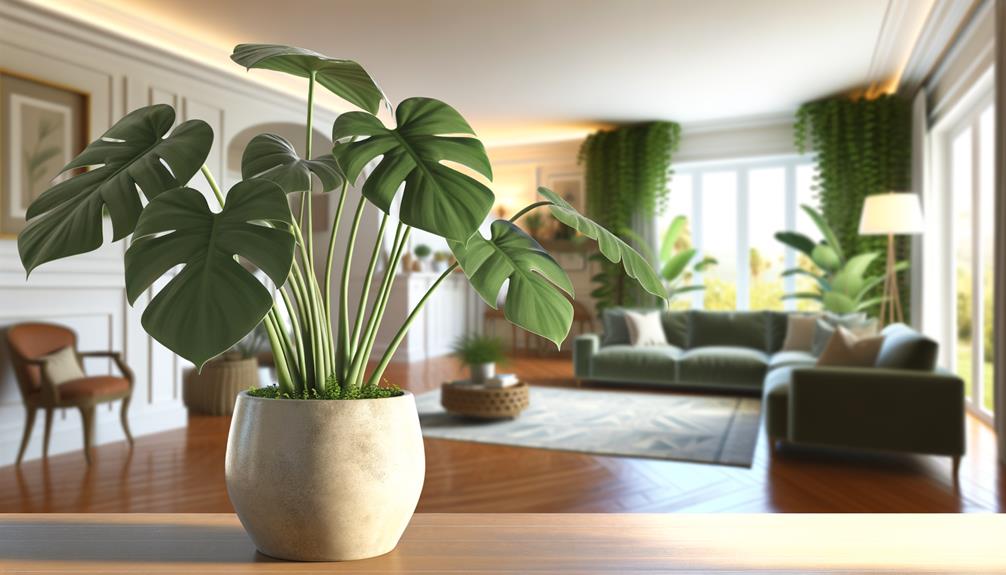
Key Takeaways
- Philodendron Hope, scientifically known as Philodendron bipinnatifidum, originates from South America.
- It features large, glossy, pinnately lobed leaves and a climbing habit.
- The plant thrives in humid, shaded environments with indirect light and well-draining soil.
- Known for its air purification properties, it filters toxins like formaldehyde.
- Minimal maintenance is required, including regular watering and occasional pruning of damaged leaves.
Origins and History

Frequently found in tropical regions, Philodendron Hope, also scientifically known as Philodendron bipinnatifidum, has a rich history rooted in the dense rainforests of South America. Originating primarily from Brazil, Paraguay, and northern Argentina, this species thrives in humid, shaded environments.
The genus Philodendron, derived from Greek—'philo' meaning love and 'dendron' meaning tree—reflects the plant's affinity for tree-climbing in its natural habitat. Documented by European botanists in the 19th century, Philodendron bipinnatifidum has since become a staple in botanical studies and horticulture. Its robust adaptability to various environments has facilitated its spread to other tropical and subtropical regions globally.
As a member of the Araceae family, it shares lineage with numerous other aroids, contributing to its diverse genetic makeup and ecological significance.
Physical Characteristics
Characterized by its deeply lobed, glossy green leaves, Philodendron Hope exhibits a unique morphology that supports its climbing habit and adaptability in various environments. The leaves, large and pinnately lobed, can reach up to 3 feet in length, facilitating efficient photosynthesis.
This species, scientifically known as Philodendron bipinnatifidum, belongs to the Araceae family and displays a robust stem structure that aids in nutrient and water transport. Aerial roots emerge from the nodes, enabling the plant to anchor itself to surrounding structures. The petioles are elongated and sturdy, providing support to the expansive leaf blades.
Moreover, the plant's indeterminate growth habit allows it to thrive in various settings, making it a versatile addition to both indoor and outdoor landscapes.
Ideal Growing Conditions
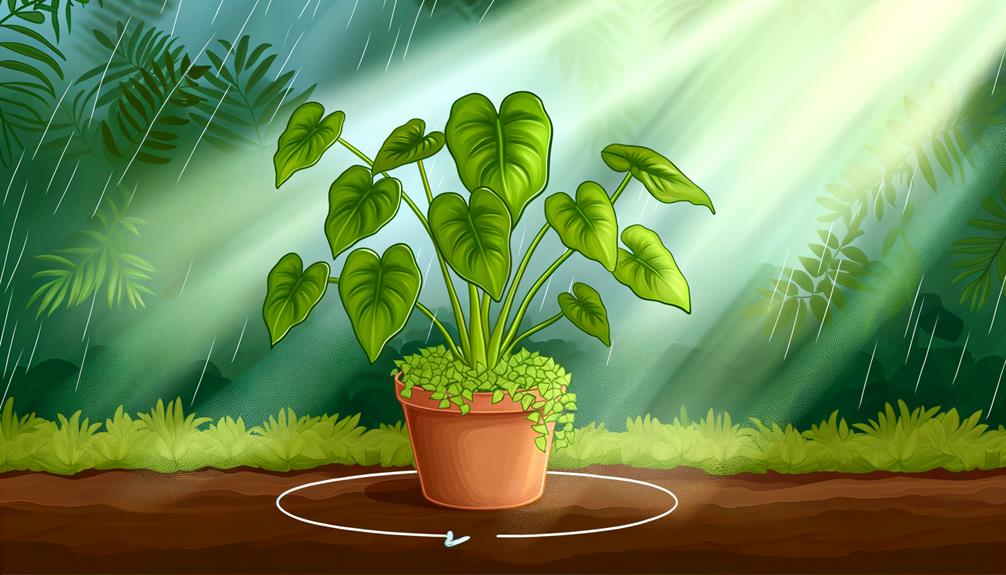
To cultivate Philodendron Hope (Philodendron bipinnatifidum) successfully, it is important to provide consistent, indirect light, well-draining soil, and moderate humidity. This species thrives in environments where it receives bright, filtered sunlight, mimicking its natural understory habitat.
Ideal soil composition includes a mix of peat, perlite, and pine bark to maintain proper aeration and drainage, thus preventing root rot. Maintaining relative humidity levels between 60-70% is vital for optimal growth, as this plant is native to tropical regions.
Temperature requirements should be kept between 18-27°C (65-80°F), avoiding cold drafts and sudden fluctuations. Regular monitoring of these conditions will promote vigorous development and overall plant health, ensuring the Philodendron Hope reaches its full ornamental potential.
Care and Maintenance
Proper care and maintenance of Philodendron Hope involve regular watering, pruning, and pest management to sustain its health and aesthetic appeal. To optimize growth and safeguard the plant's longevity, it is essential to follow these practices:
- Watering: Maintain consistent soil moisture by watering when the top inch of the substrate feels dry. Overwatering can lead to root rot, while underwatering may cause leaf curl and browning.
- Pruning: Regularly remove yellowing or damaged leaves to encourage new growth and preserve the plant's structural integrity. Sterilize pruning tools to prevent pathogen transmission.
- Pest Management: Inspect the plant frequently for common pests such as spider mites, aphids, and mealybugs. Utilize insecticidal soap or neem oil as a biological control method to manage infestations.
Benefits and Uses
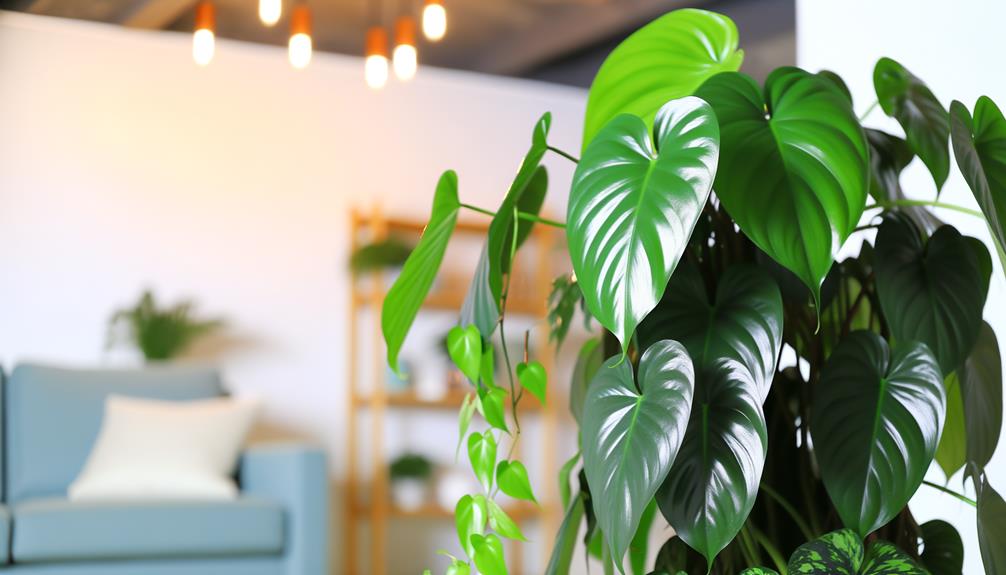
Philodendron Hope, scientifically known as Philodendron bipinnatifidum, offers numerous benefits, including air purification and aesthetic enhancement, making it a popular choice for both residential and commercial spaces.
This plant is recognized for its ability to filter airborne toxins such as formaldehyde, benzene, and trichloroethylene, contributing to improved indoor air quality. Its large, deeply lobed leaves provide a lush, tropical aesthetic, enhancing interior design and creating a serene environment.
Additionally, Philodendron bipinnatifidum is versatile in its usage, thriving in diverse lighting conditions and requiring minimal maintenance. It serves as an ornamental centerpiece in homes, offices, and public areas, combining functionality with visual appeal.
Therefore, it stands as a great choice for enhancing both environmental and aesthetic value.
Conclusion
Philodendron Hope, also known as Philodendron bipinnatifidum, embodies a fascinating fusion of botanical history and aesthetic appeal. Its deeply lobed leaves and robust growth render it an ideal candidate for both indoor and outdoor cultivation.
But what makes this species particularly compelling? Beyond its ornamental value, it contributes to air purification and psychological well-being. Therefore, understanding and mastering its care requirements can yield substantial ecological and personal benefits.


